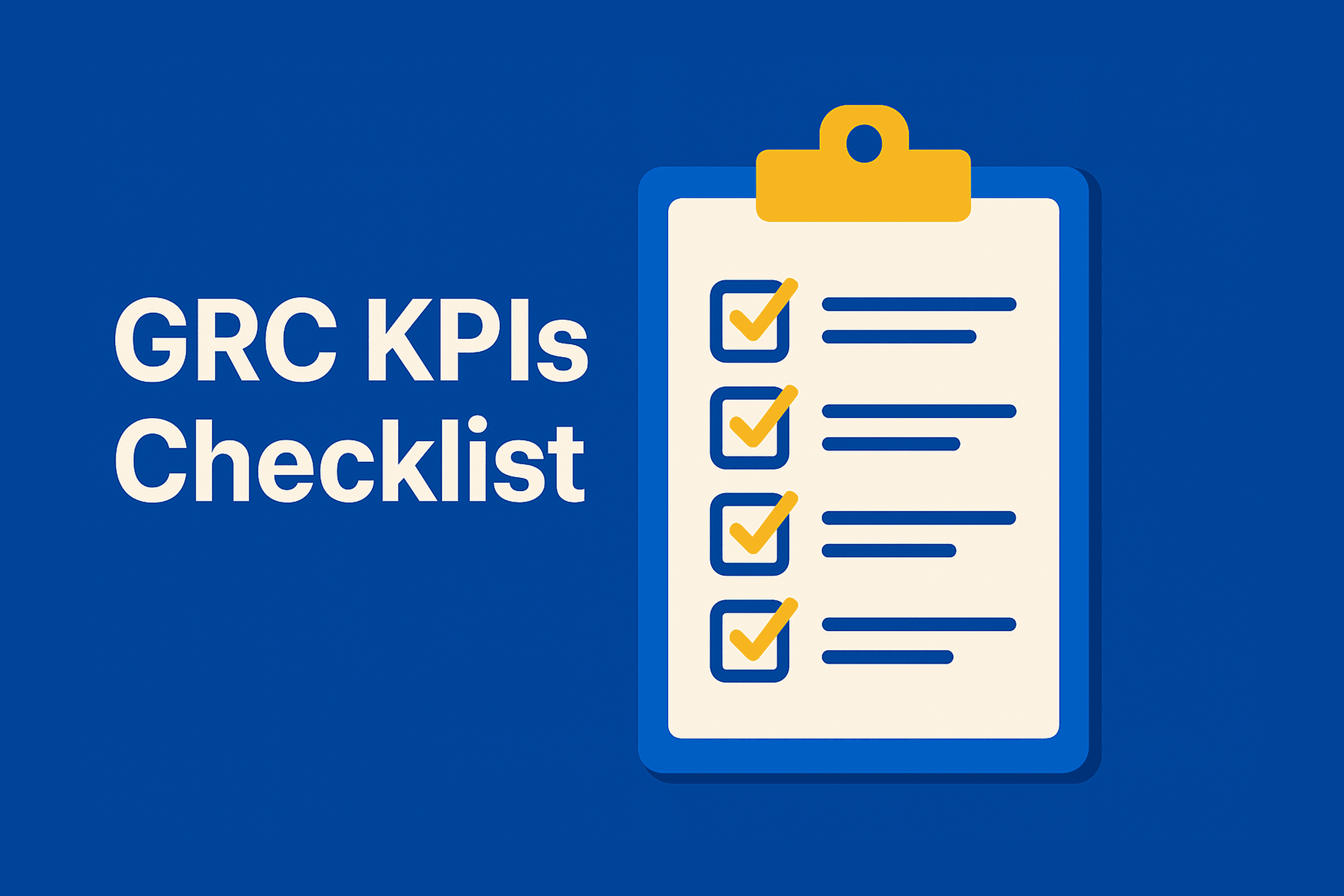07 Apr

Tracking security KPIs is essential for keeping your organisation’s risk and compliance on track. Afterall, you get what you measure, so you better track and measure the things that are meaningful for your organisation.
In this guide, we’ll walk through how to choose metrics for your information security prorgram that make a difference. We’ll go over a checklist to help you decide whether a KPI is worth your time.
1. Does This KPI Directly Support Governance, Risk, or Compliance Objectives?
Security KPIs should directly contribute to your GRC goals. If a metric doesn’t help you manage risk or improve compliance, it might not be worth tracking.
Examples:
- ❌ Weak KPI: Total number of risks logged. This number doesn’t indicate whether your security posture is improving.
- ✅ Good KPI: Percentage of high-risk assets without mitigating controls. This shows actual risk exposure and highlights areas needing attention.
2. Can You Take Action Based on It?
A good KPI should lead to clear, actionable steps. If it doesn’t, it’s just noise.
Examples:
- ❌ Weak KPI: Number of vendor risk assessments completed. This doesn’t reflect risk reduction.
- ✅ Good KPI: Percentage of high-risk vendors with a remediation plan in place. This metric shows progress in addressing risks.
3. Can You Consistently Measure This Without Excessive Manual Effort?
If a KPI takes too much effort to track, it’s not sustainable. Choose metrics that are consistent and easy to measure.
Examples:
- ❌ Weak KPI: Security posture improvement score. Vague and lacks structure.
- ✅ Good KPI: Percentage of business-critical applications reviewed for security in the last 12 months. Clear and measurable.
4. Does This KPI Track Improvement or Decline Over Time?
KPIs should show trends rather than one-time snapshots. This helps you track progress and adjust your approach.
Examples:
- ❌ Weak KPI: Total number of audit findings. Doesn’t show if issues are being resolved.
- ✅ Good KPI: Time taken to remediate audit findings by severity level. Tracks whether your response time is improving.
5. Is It Focused on Outcomes, Not Just Activity?
Activity-based KPIs can be misleading. Instead, focus on metrics that show real progress.
Examples:
- ❌ Weak KPI: Number of security exceptions requested. Doesn’t indicate risk management quality.
- ✅ Good KPI: Percentage of security exceptions with compensating controls. Shows how risks are being mitigated.
6. Does This KPI Help with Objectives Without Unnecessary Overhead?
Efficient KPIs strike a balance between usefulness and practicality. Avoid metrics that create extra work without clear benefits.
Examples:
- ❌ Weak KPI: Number of security training sessions held. Doesn’t measure behavior change.
- ✅ Good KPI: Percentage of high-risk controls automated vs. manually enforced. Balances risk reduction and efficiency.
7. Is It Relevant to Your Organization?
Make sure the KPI fits your company’s structure and risk profile. What works for one company may not work for another.
Examples:
- ❌ Weak KPI: Number of unauthorized badge entries in office buildings. Irrelevant for remote-first companies.
- ✅ Good KPI: Percentage of remote employees who reported their primary work location and passed an environment security check. More relevant for a remote-first setup.
GRC Metrics Checklist
Choosing the right KPIs means focusing on metrics that drive security improvements without wasting resources.
The best KPIs are:
- ✅ Aligned with security objectives
- ✅ Actionable
- ✅ Outcome-focused
- ✅ Efficient to track
- ✅ Relevant to your organization
By applying these principles, you’ll focus on what truly matters: driving security improvements that make a real impact.